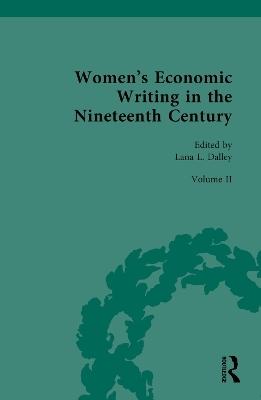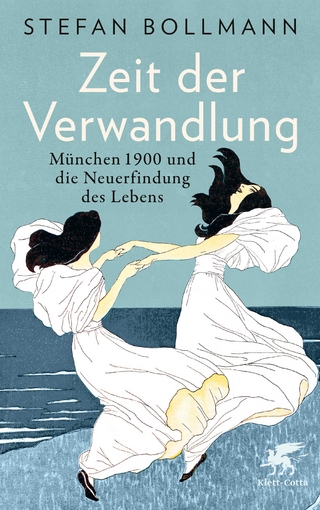
Women’s Economic Writing in the Nineteenth Century
Routledge (Verlag)
978-0-367-33658-5 (ISBN)
Lana L. Dalley is Professor of Victorian Literature, California State University, Fullerton, USA
Volume 2
General Introduction
Part 2. Feminist Economics
1. Harriet Martineau, ‘Independent Industry of Women’, Daily News, 17 November 1859, p. 4.
2. Barbara Leigh Smith Bodichon, ‘Report of the Society for Promoting the Employment of Women’, Vol. IV, No. 33, November 1860, pp. 146-151.
3. Elizabeth Garrett Anderson, ‘Volunteer Hospital Nursing’, Paper read at the Tenth Annual
Meeting of the National Association for the promotion of Social Science, Manchester, 1866.
4. Matilda Joslyn Gage, ‘Woman as an Inventor’, The North American Review, Vol. 136, No. 318, May 1883, pp. 478-489.
5. Eleanor Marx Aveling and Edward Bibbins Aveling, ‘The Woman Question’, Westminster
Review, Vol. 125, January 1886. pp. 207-22.
6. Clara E. Collet, ‘The Economic Position of Educated Working Women’ (February 1890), in Educated Working Women: Essays on the Economic Position of Women Workers in the Middle Classes (London, P.S. King & Son, 1902), pp. 1-26.
7. Anna Julia Cooper, ‘What Are We Worth?’, pp. 175-186.
8. Anna Julia Cooper, ‘Colored Women as Wage-earners’, Southern Workman and Hampton
School Record, August 1899, pp. 295-98.
9. Frances M. Abbot, ‘The Pay of College Women’, The North American Review, Vol. 163, No. 478, Sept. 1896, pp. 337-344.
10. Margaret Bateson, ‘A Pound a Week – Why Girls Should Earn It’, A Girls Own Paper. October 1896, pp. 14-15.
11. Fannie Barrier Williams, ‘The Problem of Employment for Negro Women’, Southern
Workman, Vol. 32, September, pp. 432-47.
12. Edith Abbott, ‘Harriet Martineau and the Employment of Women in 1836’, Journal of Political Economy, Vol. 14, No. 10, Dec. 1906, pp. 614-626.
13. Mabel Atkinson, ‘The Economic Foundations of the Women’s Movement’, Fabian Women’s
Group Series, no. 4 Fabian Tract, no. 175 (London: Fabian Society, 1914).
Part 3. Domestic Economics
14. Mary Anne Radcliffe, ‘The Story of Fidelia’, in The Female Advocate, or an Attempt to Recover the Rights of Women from Male Usurpation (London, Vernor and Hood, 1799), pp. 97-127.
15. Maria Edgeworth, Castle Rackrent (London, J. Johnson, 1800).
16. Lydia Marie Frances Child, The American Frugal Housewife, Dedicated to Those Who Are Not Ashamed of Economy (Boston, Marsh & Capen and Carter & Hendee, 1832), pp. 3-7.
17. Mrs. J. H. Riddell, Mortomley’s Estate: A Novel (London, Hutchinson & Co, 1874), pp. 1-9.
18. Catherine Selden, ‘The Tyranny of the Kitchen’, The North American Review, Vol. 157, No. 443, October 1893, pp. 431-440.
19. Ada Heather-Bigg, ‘The Wife’s Contribution to Family Income’, The Economic Journal, Vol. 4, No. 13, March 1894, pp. 51-58.
20. Marie Corelli, Flora Annie W. Steel, Lady Susan Hamilton Ardagh and Baroness Susan Mary St. Helier Jeune. The Modern Marriage Market (London, Hutchinson, 1898).
21. Jane Addams, ‘The College Woman and the Family Claim’, Commons. Vol. 3, 1898, pp. 3-7.
22. Kate Sheppard, ‘Economic Independence of Married Women’, (1899).
23. Helen Bosanquet, ‘The Economic Importance of the Family’, in The Strength of the People: A Study in Social Economics (London: Macmillan, 1903), pp. 180-192.
24. Katherine Susan Anthony, extracts from Mothers Who Must Earn (New York: Survey Associates, 1914), pp. 18-24, 85-89, 199-200.
25. Olive Malvery, ‘Women Who Work and Babes Who Weep – ‘What "Home Industries" Mean’, in The Soul Market (New York, McClure, Phillips, and Company, 1907), pp. 182-201.
26. Cecily Hamilton, Marriage as a Trade (New York, Moffat, Yard and Company, 1909).
Index
| Erscheinungsdatum | 20.07.2023 |
|---|---|
| Zusatzinfo | 1 Tables, black and white; 3 Halftones, black and white |
| Verlagsort | London |
| Sprache | englisch |
| Maße | 156 x 234 mm |
| Gewicht | 625 g |
| Themenwelt | Geschichte ► Allgemeine Geschichte ► Neuzeit (bis 1918) |
| Geisteswissenschaften ► Geschichte ► Regional- / Ländergeschichte | |
| Geschichte ► Teilgebiete der Geschichte ► Wirtschaftsgeschichte | |
| Geisteswissenschaften ► Sprach- / Literaturwissenschaft ► Anglistik / Amerikanistik | |
| Geisteswissenschaften ► Sprach- / Literaturwissenschaft ► Literaturgeschichte | |
| Wirtschaft ► Volkswirtschaftslehre | |
| ISBN-10 | 0-367-33658-8 / 0367336588 |
| ISBN-13 | 978-0-367-33658-5 / 9780367336585 |
| Zustand | Neuware |
| Informationen gemäß Produktsicherheitsverordnung (GPSR) | |
| Haben Sie eine Frage zum Produkt? |
aus dem Bereich


